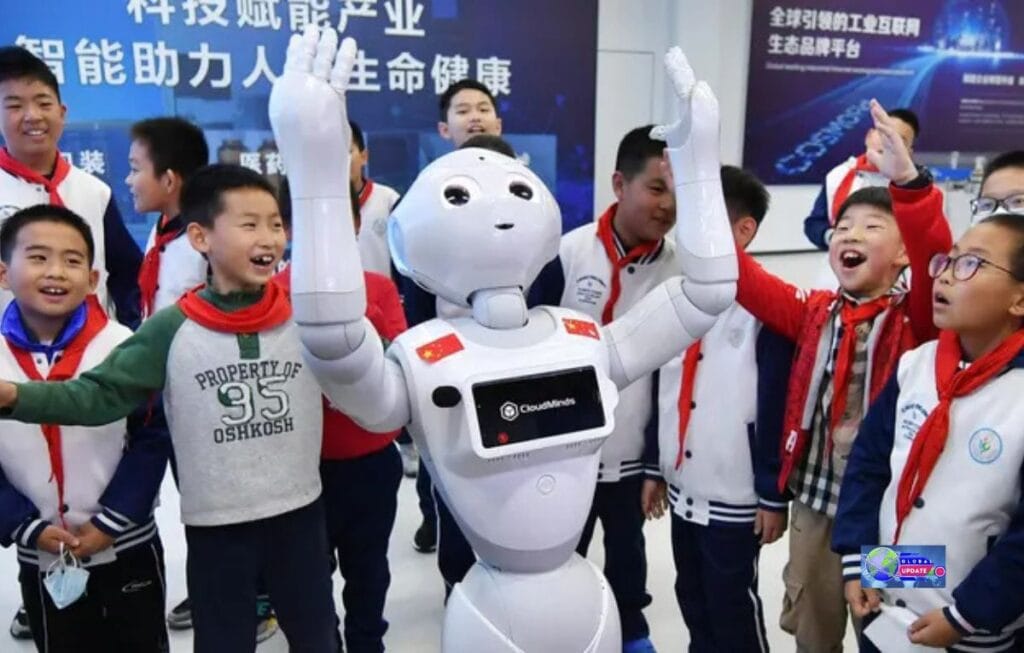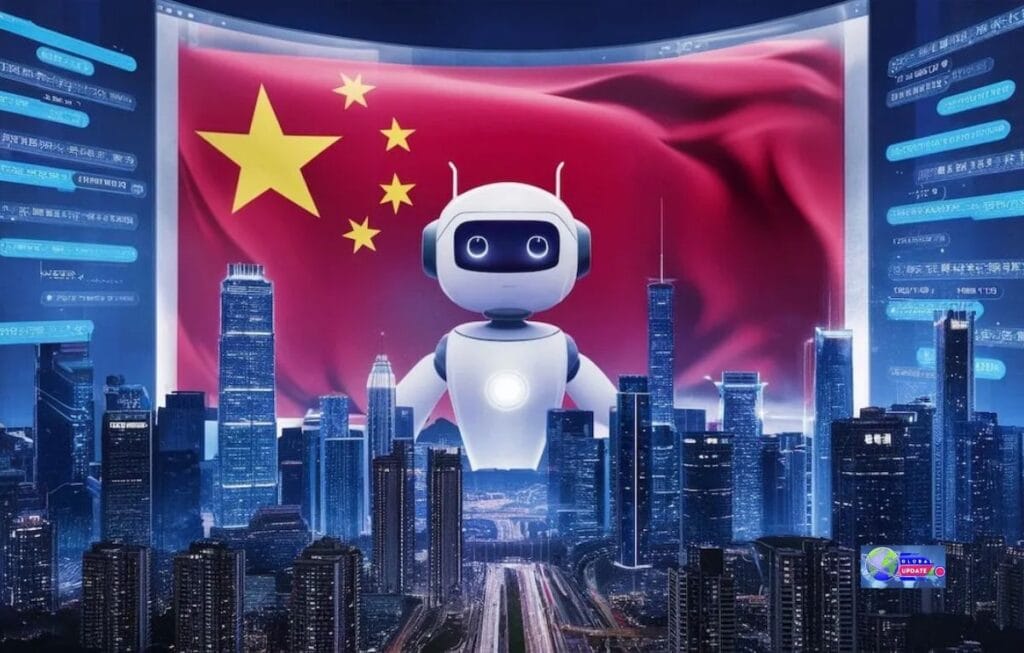The Rise of Temple Fairs Controlled by Artificial Intelligence
Introduction
Temple festivals powered by artificial intelligence are an incredible sight that has come about due to the combination of China’s rich cultural legacy and its quickly evolving technical landscape.
The Lunar New Year, which is celebrated with eight days of family reunions, celebratory banquets, and cultural performances, has entered the digital age. Artificial intelligence is crucial in revitalizing long-standing customs.
This union highlights how improvements in modern society may complement and enrich past practices rather than replace them. It also provides a glimpse into the future of cultural festivals worldwide.
China’s Lunar New Year celebrations are extravagant and traditional, including dragon dances and red envelopes packed with auspicious money. However, current inventions seamlessly complement cultural heritage in a rapidly changing technological environment.
The Artificial Intelligence Temple Fair is the latest example of this integration. It combines artificial intelligence with a typical fair to provide a unique immersive experience.

The Lunar New Year: A Time for Celebration and Tradition
The Spring Festival, the Lunar New Year, is the most significant holiday in China. During this eight-day celebration, millions return to their hometowns to spend time with their families and pay tribute to their ancestors. The event includes several activities, such as offering incense at temples, watching fireworks, making feasts, and performing cultural performances.
Temple fairs are among the most beloved traditions. Visitors attend these fairs to enjoy folk performances, pray for good fortune, and visit historical landmarks. These fairs are lively locations where street vendors sell local delicacies, artisans demonstrate their crafts, and entertainers perform lion dances, acrobatics, and Peking opera.
With the arrival of artificial intelligence, these fairs are generally experiencing significant changes in their operations. They are now more participatory, engaging, and accessible to more individuals than they were in the past.
Temple fairs incorporate artificial intelligence to make visitors’ experiences more efficient and varied. Innovative offerings, such as AI tour guides and deities that can be visualized and blessed, are changing how people experience unchangeable epic traditions.
1. Virtual tour guides that are controlled by artificial intelligence
AI-powered guides use voice recognition and deep-learning algorithms to show travelers real-time historical facts as they stroll through old temples. Virtual guides are created to answer inquiries in various languages and make cultural treasures available to tourists from other countries. Unlike human guides, AI-powered guides can provide personalized recommendations, recite folklore, and vary their responses based on visitors’ interests.
2. Digital fortune-telling with artificial intelligence
One of the temple fair’s prominent attractions is fortune-telling. People receive guidance from mystics or the Book of Changes (I Ching). In AI-assisted fairs, digital fortune-tellers analyze user data, zodiac signs, and traditional algorithms to create personalized predictions.
Some AI fortune-telling kiosks use face recognition and machine learning to analyze emotions and help visitors better understand what the upcoming year has in store for them.
3. Calligraphy and Art Created by AI
Calligraphy is an essential aspect of Chinese culture and is frequently used to compose New Year couplets that contain phrases considered lucky. Robots powered by artificial intelligence and educated in conventional brushstroke techniques can now produce personalized calligraphy that resembles the work of professional calligraphers. Visitors can enter their wishes, and the AI will generate customized scrolls to take home.
These AI-generated pieces maintain Chinese calligraphy’s brilliance while allowing for mass customization.
4. Experiences in Virtual Reality (VR) and Augmented Reality (AR)
Temple fairs are using virtual reality and augmented reality to provide interactive experiences. Visitors can wear augmented reality glasses to see ancient rites or historical reenactments projected onto the temple’s walls. At the same time, virtual reality booths send users to well-known temples throughout China, enabling them to participate in rituals and cultural events without leaving their city.
The Function of Robotics at Temple Fairs
Temple fairs also feature artificial intelligence-based robotics. These technological advancements, from robotic monks to robotic tea servers, transform how Asian tourists experience the show.
1. AI Monks Providing Virtual Blessings
In China, several Buddhist temples have begun using AI monks, robots that can perform prayers, explain Buddhist teachings, and deliver digital blessings. The monks, powered by artificial intelligence, use natural language processing to answer guests’ inquiries about spirituality and religious teachings, which are easier to access for younger generations, who are accustomed to interacting with technology.
2. Automated Street Performers and Lion Dances
Robot entertainers have recently been a popular attraction at temple fairs. Robots that do lion dances controlled by artificial intelligence have moved in unison and worn bright LED costumes to imitate traditional dancers. The artificial dancers add a futuristic element to the fair and help preserve the conventional performance when fewer professional performers are available.
3. Merchants with China’s AI and Intelligent Payment Systems
Temple fairs have adopted cashless transactions, while AI-powered vending machines are selling local foods and festival souvenirs. Facial recognition technology makes it easy for visitors to buy things without waiting, making the process more convenient. Merchants who use AI also study how customers behave by suggesting customized festival things, which guarantees a buying experience tuned to their needs.
Bridging the Generational Gap Using Artificial Intelligence
One significant benefit of temple fairs that use artificial intelligence is that they can attract younger generations to ancient rituals that they would otherwise not be interested in. Tech-savvy young people are encouraged to learn about their ancestry meaningfully by making culture interactive through gamification with artificial intelligence, augmented reality games, and digital stories.
AI temple fairs also help to make customs more inclusive. China’s AI-powered virtual tours allow older people who cannot attend the fairs in person due to mobility concerns to enjoy the celebrations from their homes.
Finding a Middle Ground Between Tradition and Innovation
Although artificial intelligence affects temple fairs, maintaining the spirit of these events is still essential. Cultural experts and historians are working with technologists to ensure that artificial intelligence (AI) features improve tradition rather than replace it. In that regard, a perfect mix of the old and the new may allow temple fairs to remain cultural in every aspect while delivering all the excellent qualities of technology.
The Future of Festivals with AI Integration
China’s temple festivals on AI demonstrate how technology may peacefully coexist with ancient customs, adding new elements to the ceremonies. As this technology develops, future festivals, such as holographic storytelling through real-time multicultural exchanges in the metaverse, may have even better connections.
While artificial intelligence connects the past and the future, China’s temple fairs keep cultural heritage alive, excitingly for future generations. These festivals combine history with technology naturally, showing how festivals worldwide can change and develop while maintaining their historical importance.
The Worldwide Effects of Festivals Improved by Artificial Intelligence
The China AI temple fair will serve as an example for other countries to follow in incorporating technology into cultural events. Festivals like Gion Matsuri in Japan, Diwali in India, and Carnival in Brazil can leverage AI-enhanced features to create experiences that attract visitors worldwide.
In addition, artificial intelligence-based methods of cultural preservation, such as digitizing old texts, repairing historical artifacts, and constructing virtual museums, can help maintain traditions for future generations. Therefore, communities can use artificial intelligence to celebrate their history while looking forward to the future.
Final Thoughts
The AI temple festivals in China demonstrate how cultural heritage may flourish in the digital era by combining traditional and technological elements. China has revolutionized the Lunar New Year experience while remaining faithful to its traditions, including AI-powered performances, dazzling lanterns, robotic chefs, virtual fortune-telling, and clever crowd control.
As technology advances, balancing innovation and authenticity becomes increasingly tricky. China’s AI temple festivals are paving the way for a future in which culture and technology may live together by ensuring that China’s AI never replaces tradition but instead facilitates it. This mutually beneficial connection ultimately guarantees that long-standing events will remain lively, significant, and available to future generations.
Keep on Reading:
- DeepSeek Is a Win for China in the AI Race. Will the Party Stifle It?
- Chinese New Year: A Cultural and Celebration Event.



